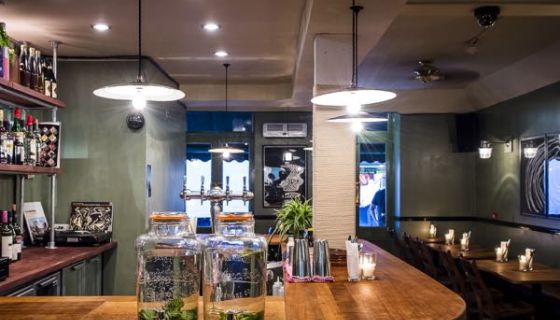When I opened my restaurant in London’s Soho in 1981 I was warned by several people that I might have to pay some form of protection money to the local gangs that it was believed then ran the area. Nothing materialised.
Today, the pendulum seems to have swung the other way. Many who believe they know Soho feel that it has become too sanitised, that it has lost its raunchy edge and that the area’s good old days are gone for ever. They are equally mistaken.
Soho survives and prospers, as do so many restaurateurs within it, for several reasons. Its location, in the heart of the West End, is paramount. Equally important is the fact that Soho’s narrow streets are full of small buildings that lend themselves to housing the offices and design studios of those in the emerging and established creative businesses.
But it is the presence of the theatres along Shaftesbury Avenue that are really the economic lifeblood for Soho’s restaurateurs, in particular the fact that when most of these theatres were built, no consideration at all was given to the provision of a café, restaurant or even a comfortable bar within them. Today, no performing venue would be built without this amenity, and income stream for the theatre, but that was not a 19th-century consideration.
As a result, Soho’s well-positioned restaurants are presented with customers pre and post performance and are able to slot in another sitting in-between. This is a happy symbiosis.
This has led in recent times to a range of restaurants that I don’t believe can be matched in any other part of London. Along Rupert Street are the Israeli-inspired Palomar, the Japanese Kizaru and the American Spuntino. Just off Wardour Street is the Asian-inspired Bone Daddies, round the corner from Princi, for consistently good and authentic modern Italian food. On Frith Street, Barrafina is an exciting tapas bar while Maison Bertaux on Greek Street epitomises the charms and quirkiness of the independently owned tearoom.
Most relevantly, Soho’s small, intimate ground floors lend themselves to the style of food many want to eat today. What seems to me to be most in demand right now is either a specific style of cooking, with some choice, or a limited range of well-connected ingredients executed swiftly and professionally. Three new openings successfully respond to this demand and all tap into Soho’s colourful past, albeit in very different ways.
The most striking transformation has taken place at 7 Denmark Street, once home to the TPA bar (Tin Pan Alley of a bygone era) and once the haunt of criminal Frankie Fraser.
Today, it trades under the name of the Smoking Goat and its menu, drinks and wine list are radically different from its past. The Smoking Goat’s cooking technique is that of a Thai barbecue; the menu on offer is pretty limited; yet the place, for those who enjoy pretty spicy Thai food, is highly appealing. This appeal is increased by the smoke that billows out of the tiny kitchen behind the bar and the cosy, highly atmospheric room at the back that accommodates a communal table for eight at which a lazy susan is laid up with a £35 per person feasting menu.
This menu is an amalgam of what features each evening. While a pomelo and chilli salad and another of roast aubergines are relatively refreshing, heat is provided by smoked lamb ribs with palm sugar, duck legs with kaffir limes, and Cornish clams in a yellow curry sauce. Sydney, our waitress from New Orleans, was charm personified.
Gordon Ker has displayed the same vision in his transformation of a basement in Great Windmill Street that was once a brothel but is now Blacklock, a destination for those who enjoy meat chops of all varieties.
Ostensibly, Ker’s investment of just over £100,000 has not been unusually spent in that the interior is exposed brick walls and cast iron columns and bookings are not taken. Its particular secrets lie in the kitchen.
In their mission to serve their chops caramelised on the outside but still pink in the centre, the initial challenge lay in keeping the meat long enough on the grill for the former to materialise but not to the detriment of the latter. A providential solution was found by placing a hefty, black cast-iron iron, produced at the Blacklock foundry in Tennessee in the early 20th century, over the seasoned meat once on the grill. Shortly Blacklock opened, several sweet potatoes were left in the embers overnight as an experiment and the result is one of the best interpretations of this vegetable.
The final reinterpretation of something that Soho has proudly represented for the past 51 years comes in the recent transformation of Milroy’s, the long-standing whisky specialist, into a bar by Lee Tomlinson, Angus Martin and Martyn Simpson.
While the focus on malt whisky remains unchanged, the drinks offer has been widely extended both on the ground floor and in a ‘secret bar’ in the basement reached by pushing a fake library wall to one side. Where coal was once stored, great cocktails are now served.
Yet there has been one significant change on the streets of Soho. Women, once exploited, now appear to form the biggest group of its happy customers.
Smoking Goat 7 Denmark Street, London WC2H 8LZ
Blacklock The Basement, 24 Great Windmill Street, London W1D 7LG
Milroy’s 3 Greek Street, London W1D 4NX; tel +44 (0) 20 7734 2277














